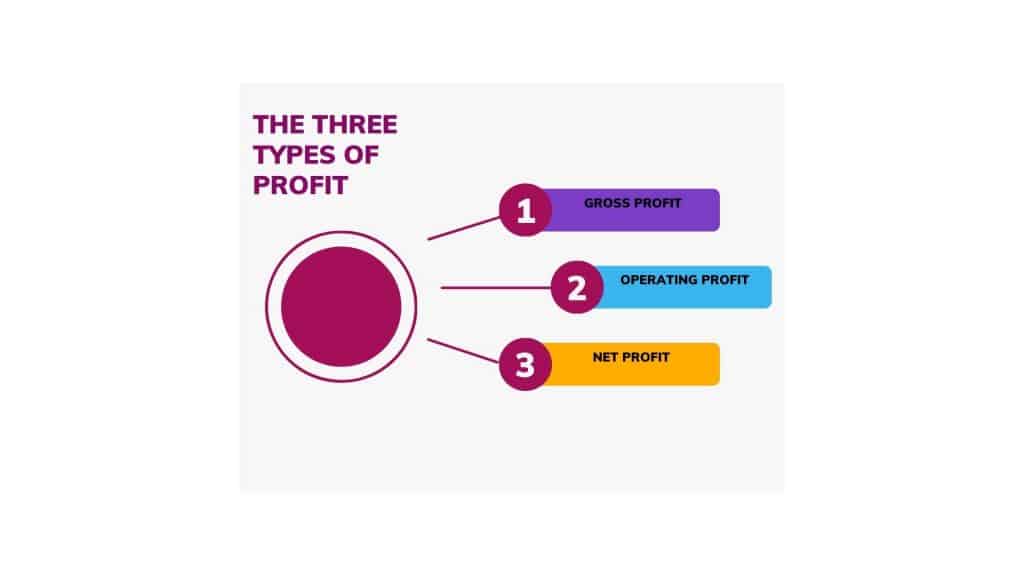Reflecting on my experiences working directly with businesses, I cannot overstate the importance of properly understanding the difference between revenue, earnings, and profit. As a result, evaluating a business’s performance, including its top line, bottom line, and income, is quite beneficial. I believe that gaining a deeper understanding of the difference between earnings and revenue (earnings vs revenue vs profit) can help you become more proficient in your financial operations as a business owner.
So, as a seasoned business consultant who’s been around the block with a thorough understanding of economic terminology, I will break down the key differences between earnings, revenue, and profit (earnings vs revenue vs profit). So, read on!
Key Takeaways
BusinessYield
- Revenue, profits, and earnings are sometimes used interchangeably; however, they refer to separate things in the context of financial records.
- Revenue is the amount of money a business makes from regular commercial activities, such as sales. Revenue does not include business expenses, in contrast to earnings and profit.
- As a business owner, you can calculate your earnings by deducting your operational costs from your revenue. Make sure to account for additional running costs like as rent, taxes, and wages in addition to the item costs.
- A business’s profit is the amount of money it makes over the cost of goods purchased. Operating costs like as rent, salaries, and taxes may be left out of your analysis.
- Both revenue earnings and profit can influence the overall economic value of a business.
What is Revenue?
Revenue is the whole amount made from sales activity. More precisely, revenues are the amounts received from the sale of products and services before any costs are deducted. They provide a clear picture of a business’s total activity level to the reader of the financial statements.
Read also: How to Calculate Revenue In Business Accounting (Steps and Examples)
What are Earnings?
Earnings include all of the charges and deductions related to operating a business. This includes taxes, interest, production costs, and operational expenses. It establishes the profitability of a business and represents its actual financial performance.
Now, you understand the definition of earnings and revenue, respectively, as well as their importance. Now, let’s look at the clear difference between earnings and revenue ( Earnings vs Revenue).
Earnings vs Revenue
To better understand the clear difference, picture a company that sells 10 billion dollars worth of products in a year to gain a better understanding of the company’s revenue. The company’s total revenue is represented by every cent of those ten billion dollars; however, this amount does not indicate the company’s earnings.
Assume the business owes eight billion dollars in total—two billion in taxes, five billion in operational expenses, and one billion in debt. As a result, these revenue figures gradually decrease to the company’s actual earnings of $2 billion.
Thus, earnings and revenue differ in the following key ways:
#1. Recognition
Revenue is recorded at the moment of a transaction regardless of whether money is transferred. On the other hand, after revenue is received and associated expenses are covered, earnings are recognized.
#2. Relevance to Investors
Both revenue and earnings can influence the overall economic value of a firm. That is to say, when assembling their portfolios, individual investors frequently consider the financial ratio between the two amounts, even if everyone has different objectives for making investments. High earnings, on the other hand, are more important to investors because they demonstrate that businesses can use their revenue wisely and profitably to develop, increasing the value of investors’ portfolios.
#3. Handling of Costs and Deductions
Revenue excludes expenses and deductions. It represents the full amount of money made. Earnings, on the other hand, represent the overall profit earned after deducting all appropriate expenses.
#4. Interpretation as a Monetary Measure
Revenue and earnings are two of the most crucial financial indicators of a business’s profitability during any given period. Earnings highlight a company’s financial health, whereas revenue indicates a company’s overall financial performance. To put it another way, earnings indicate how much a business can keep and use effectively after covering its basic operating costs and other outlays. In contrast, revenue indicates how much a business can sell.
#5. Calculation
Revenue is determined by subtracting the value of goods sold from total sales. However, earnings are determined by deducting all costs, including taxes, from the overall revenue.
Revenue vs Earnings vs Profit
Revenue, earnings, and profit are arguably the three most used terms in the business world. They all refer to profitability metrics for businesses. These phrases are crucial financial measurement instruments; they can assist a company in comprehending how much money it makes, how much money it might have left over after operating costs, and how well a product balances its costs of production or acquisition, respectively.
In other words, as a business owner, you can use this to your advantage when making decisions. Despite having different definitions, they are commonly confused and interchanged with one another. So, if you’re among those who keep getting confused, stay with me as I proceed.
Meanwhile, before I dive into their differences, you need to understand their respective core definitions. Having explained the definition of revenue and earnings above, I will now explain the core definition of profit before moving on to the differences.
What is Profit?
Simply put, profit is the difference between your revenue and your expenses. Consequently, making a profit entails making more money than it costs to provide the goods or services. To calculate profit, businesses deduct their expenses from their total income using the following formula:
Revenue – Cost of Goods= Profit
If the value is positive, businesses profit rather than lose. They also try to grow sales, lower operating expenses, and maximize profits. Many investors and decision-makers use total earnings to assess a company’s success. Given my expertise, there are three types of profit, which include the following:
- Gross profit
- Operating profit
- Net profit

#1. Gross Profit
As a business owner, it is vital to understand the term “gross profit.” It is a metric that assesses a company’s cost of sales. These sales figures solely contain the direct expenses of producing a company’s products. The greater the gross profit, the more efficiently a business makes the essential products that support its operation.
#2. Operating Profit
Operating profit is an estimate of the business’s other expenses. This type of profit is computed by deducting all of a business’s other expenses from its gross profit. Administrative costs, marketing and advertising campaign expenses, and random expenses are all examples of other expenses that affect the operational profit of a business.
As a business owner, you can derive this kind of profit by dividing operating profit by total sales. This will help you evaluate both direct and indirect expenses you encounter as a business owner.
#3. Net Profit
Net profit represents how much a business earns from each penny of sales. It is calculated as operating profit minus interest and taxes, where interest and taxes are the last two factors that affect the total profit of the company.
Now that you have an understanding of their different meanings, let me take you through their primary differences in terms of different financial terms.
#1. Financial Statements
Both revenue, earnings and profit make use of the same kinds of financial statements, such as profit and loss (PNL) and general ledgers. This is done for business planning; as a business owner, it is vital to know that strictly concentrating on one aspect, such as revenue, won’t provide a complete picture of your business’s financial prospects.
Furthermore, financial statements include a list of items in addition to the location of costs on the page. Top-line revenue is the whole amount of money that a business makes before subtracting other expenses. Profit, or the amount of money a business keeps after accounting, is always shown on the bottom line.
#2. Accounting Method
Accounting is the process of recording financial information like revenue, earnings, and profit. This process is influenced by two primary methods: cash accounting and accrual accounting.
In cash accounting, money is recorded when it is earned or received, while accrual accounting tracks money after a transaction, regardless of when it is received.
The key difference lies in how revenue and expenses are calculated. Accrual accounting records revenue as it is earned and expenses as they are incurred. On the other hand, cash accounting only records revenue and costs when money is exchanged.
#3. Subdivision
Here, each financial term has a subcategory inside it. For example, revenue includes both operating and non-operating revenue. This refers to the operations that generate revenue for the business. Earnings include both earned and unearned income. Earned income comprises direct pay items such as salaries, wages, and other similar compensation. Unearned income is revenue, such as dividends or interest, that a business may anticipate receiving but has not yet received. Finally, profit includes both gross and net profit. These terms are used to describe profit calculations that either include or exclude expenses. Gross profit is calculated by deducting all costs and taxes from revenue to arrive at net profit.
#4. Tax records
When recording revenue, income, or profit, tax documentation is essential. The revenue and profits of a business should be appropriately reflected in its tax paperwork, which is why selecting the appropriate calculation is crucial. A corporation can better manage its tax obligations and guarantee the accuracy of its earnings and profit estimates by calculating taxes accurately.
Is Earnings and Revenue the Same Thing?
Revenue is the amount of money a business makes before subtracting its costs. In contrast, earnings is the amount of profit a business has made and is determined by deducting taxes, interest, and other costs from revenue.
Does Earnings Mean Net Profit?
Net profit is another way to refer to earnings. That is to say, after all expenses are eliminated, a company’s net earnings provide the most full picture of its success.
Is Sales Revenue or Earnings?
One way to define sales is as money that customers pay. A company’s core revenue for a specific period is its sales. Revenue should logically be the greater amount. On the other hand, total revenue could sometimes fall short of total sales within a given period.
How Can Earnings Be Higher Than Revenue?
Generally speaking, since revenue is an indication of the business’s entire sales, earnings will never exceed revenue. Profits are the take-home money for the company, calculated as revenue less all related expenses.
In Essence
Having seen firsthand the consequences of financial misunderstandings in businesses, I cannot overstate the necessity of understanding the complexities of revenue, earnings, and profit. It’s more than just making money; it’s about making sound decisions that lay the groundwork for your business!
We Also Recommend the Following
- What Is Profit? Detailed Guide
- HOW TO CALCULATE REVENUE FROM SALES: All You Should Know
- How to Calculate Revenue In Business Accounting (Steps and Examples)
- TRADITIONAL MARKETING: Definition, Examples and Differences
- SALES REVENUE: Definition, Formula, How to Calculate It & Difference
References
- accountingtools.com
- synder.com
- investopedia.com






